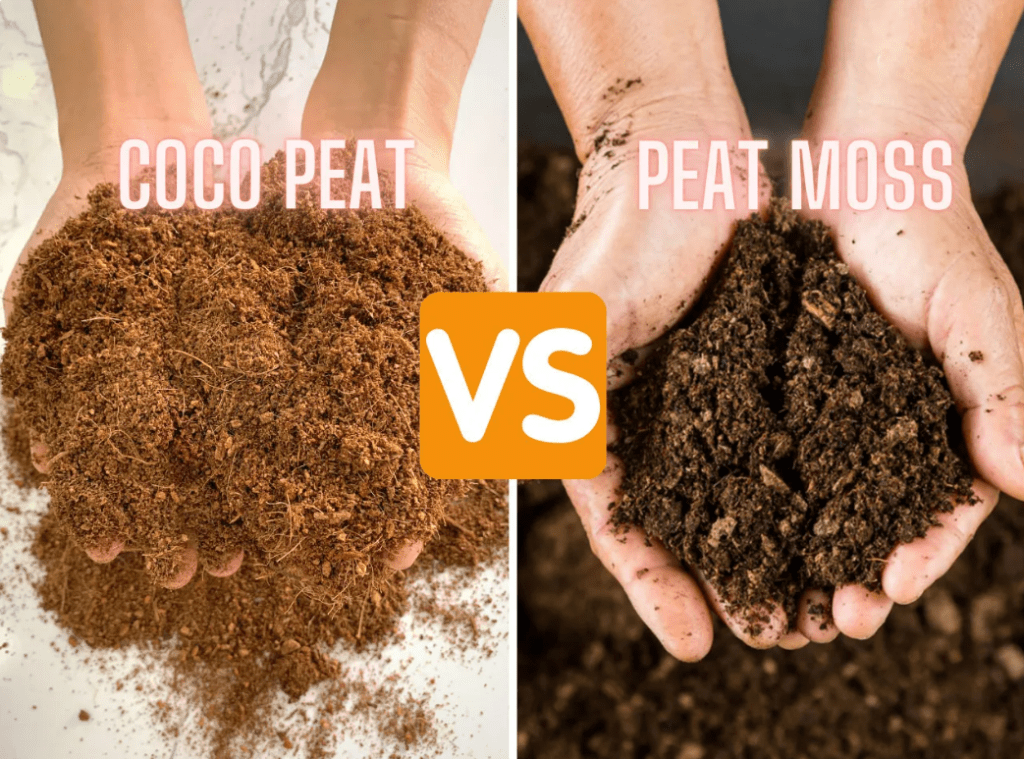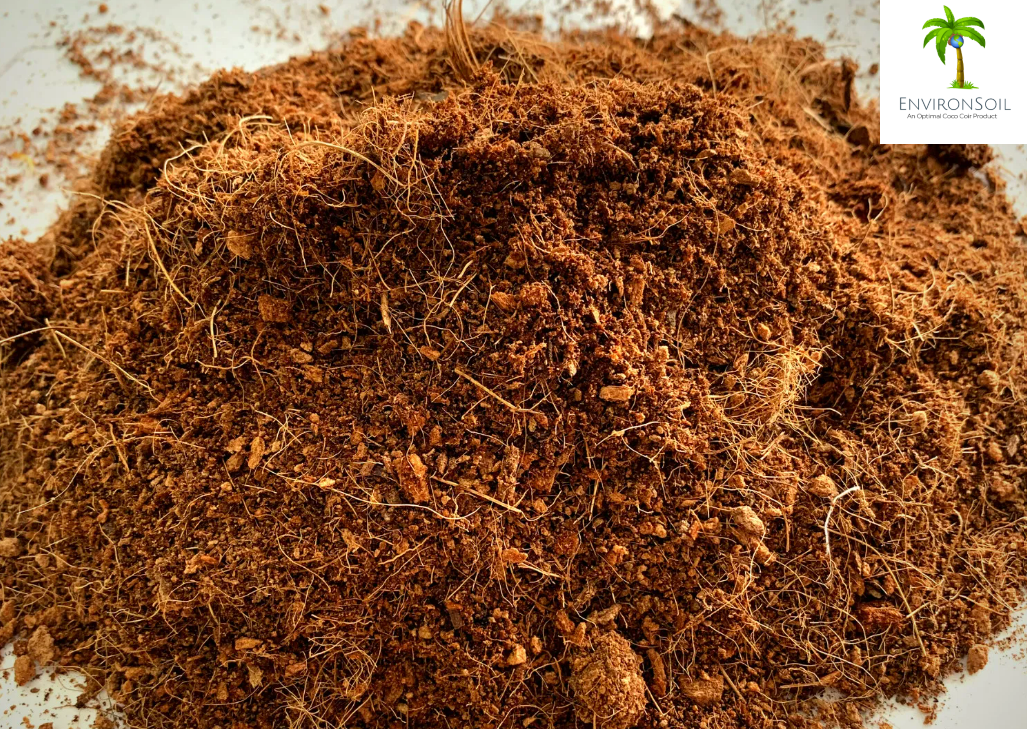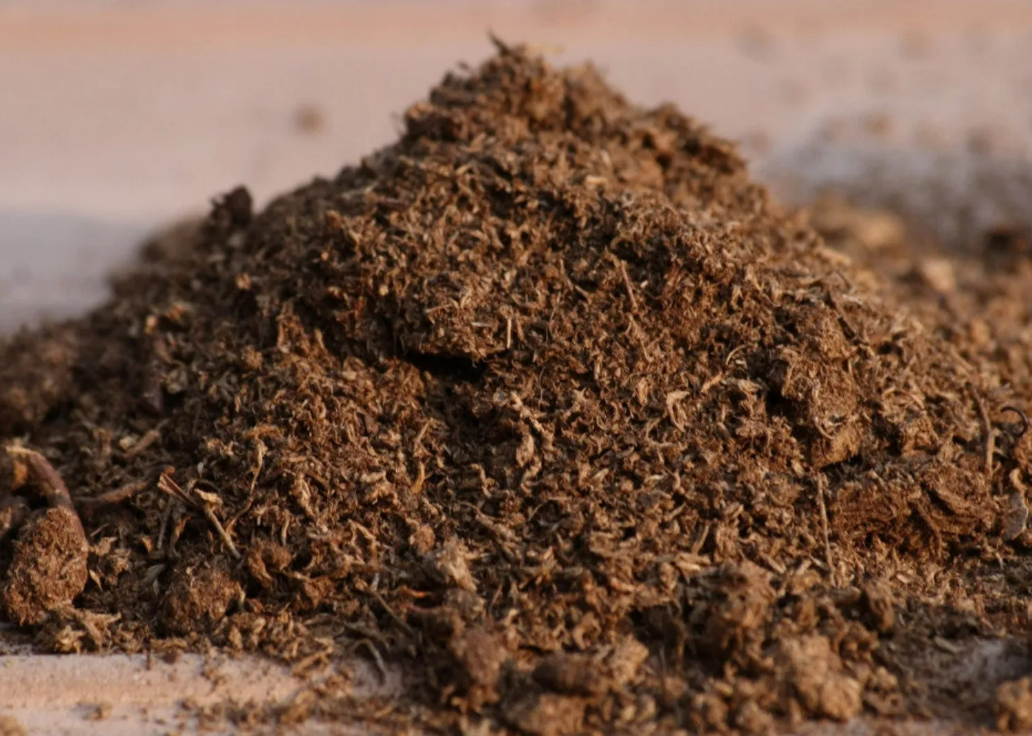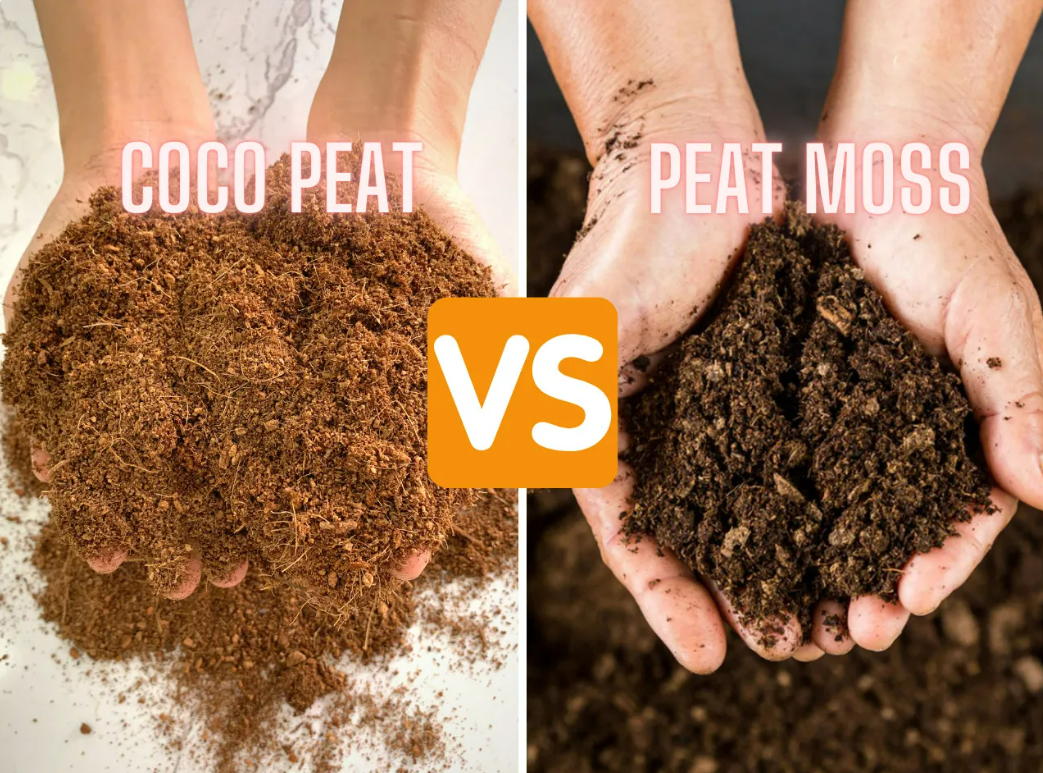
You are a modern agricultural farmer looking for products that are fit for crops and provide high quality. You have heard of coco peat and peat moss products as the alternative organic soils that can replace the traditional soil. However, you are not sure which one suits your plants and how to use them. This article by EnvironSoil will compare peat moss vs coco coir and clarify some points so that you can make the best decision.
Coir coir (also known as coco peat) is a product produced from coconut husks that can be used as an alternative to the soil for planting once tannins, lignin, EC, and pH are processed to a level suitable for plants.

Coco peat as shown above, contributes to plant growth and brings huge value to the living environment, particularly natural renewable energy sources, due to its safe and tested features.
Peat moss is found in deep swamps and contains mostly white moss (sphagnum moss). Peat moss is found in Russia, Finland, Ireland, Sweden, Germany, etc. in the form of light brown, loose fibers. They are harvested, dried, and become a clean source of carbon-rich materials to replace agricultural land.
Although officials generally disagree that peat moss is economically viable due to its poor capability of regenerating. According to a study from the University of Washington in the United States, peat moss lagoons require at least 25 years to regenerate and retain their original value. The high levels of carbon released during the decomposition of this substrate and other natural materials lead to an increase in the greenhouse effect. Furthermore, it has a negative impact on global warming.

| Content | Coco coir | Peat moss |
| Price | Cheap, easy to find and buy | Relatively expensive and hard to find |
| pH balance level | Average from 5.2 to 6.5 Standard level for crop development. | From 3 to 4.5 Perfect level for growing plants |
| Water capacity | From 7 to 10 times for dry weight Good drainage and not waterlogged | From 3 to 6 times for dry weight. Tend to be waterlogged |
| Water supply time | + Fast As coco peat has an absorbent sponge-like structure, they are capable of absorbing large amounts of water quickly | + Usually slower than coco peat Since peat moss does not have a sponge-like structure. But it has a ship-shaped structure like the leaves of white moss (sphagnum moss) to retain water. However, modern harvesting technology can endanger this structural foundation. |
| Expiry date | + Approximately 5 years Coco peat has a large amount of natural lignin (45%), which avoids the decomposition effect of fungi and bacteria. | + From 6 months to 1 year Depends on the area of formation and quality of the product. |
| Breathability | Good Coir peat has the ability to ventilate and hold air even when containing a large amount of water without being waterlogged | Degraded When water is applied to peat moss, the amount of air present in the product decreases. As a result, there is no supply to the roots. |
| Ability to maintain original form (Shrinkage) | Good Due to a large amount of lignin and fibrous structure. Coir peat does not shrink and retains its original shape | Poor Peat moss shrinks from the sides of the bag and when supplied with water it is easy to drain away. And for longer trees, a large amount of peat moss is needed, so the cost also increases |
| Water retention | + Long-lasting water retention Although the coco peat breaks down into a sponge-like structure, it retains up to 78% of its water content | + Quick drainage Peat moss only has a low water holding capacity and therefore requires frequent watering. |
| Porosity | + Excellent No need to add any other auxiliary products. Common coco peat has up to 96% off holes that allow water to flow through easily, thereby avoiding flooding at the same time | + Mid-range Need to add other by-products such as perlite, rice husk, etc. to get more porosity |
| If it is too dry, will it be calloused? | + No Due to the sponge-like structure, it will not affect the ability to quickly absorb water | + Yes Peat moss is only used for a short time. and if it is too dry, the surface will shrink and lock the hole to absorb water and air, so it needs a high cost to renovate. |
| Ion exchange capacity (+) | + High Coir peat has a high rate of CEC because the amount of ions is allocated to the molecular structure and is not filtered away. Hence, it can be kept and released with the right amount for the crop | + Low Peat moss often has a poor CEC rate if not supplemented with additional products such as perlite to avoid nutrient and ion leaching (+). |
Each product type has its own distinct advantages. Hence, you need to be aware of all the features of each product to choose the most suitable one for your plants. Due to the impact of climate change and human overexploitation, the amount of peat moss in marshes is decreasing day by day. As a result, coir peat is a superior option, contributing to economic growth, enhancing productivity, and being environmentally friendly, all of which contribute to higher living standards.
Contact us here to get more information about our products.
EnvironSoil is a leading and reputable company that currently trades and distributes a variety of products that are immensely appropriate for a wide range of crops such as fruit trees, short-term trees, vines, vegetables, and so on. EnvironSoil products are not only rigorously processed to reduce the number of contaminants that are harmful to plants and human health. Furthermore, our coco peat are the unique products since they are produced from coconut grown along the banks of the Mekong River and are processed its water, which contains nutritional content and helps to boost product productivity.